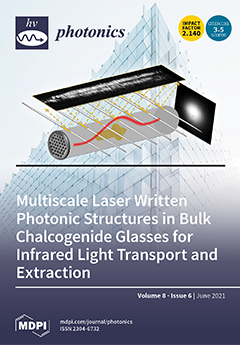Open AccessArticle
High-Density Dynamics of Laser Wakefield Acceleration from Gas Plasmas to Nanotubes
by
Bradley Scott Nicks, Ernesto Barraza-Valdez, Sahel Hakimi, Kyle Chesnut, Genevieve DeGrandchamp, Kenneth Gage, David Housley, Gregory Huxtable, Gerard Lawler, Daniel Lin, Pratik Manwani, Eric Nelson, Gabriel Player, Michael Seggebruch, James Sweeney, Joshua Tanner, Kurt Thompson and Toshiki Tajima
Cited by 6 | Viewed by 3686
Abstract
The electron dynamics of laser wakefield acceleration (LWFA) is examined in the high-density regime using particle-in-cell simulations. These simulations model the electron source as a target of carbon nanotubes. Carbon nanotubes readily allow access to near-critical densities and may have other advantageous properties
[...] Read more.
The electron dynamics of laser wakefield acceleration (LWFA) is examined in the high-density regime using particle-in-cell simulations. These simulations model the electron source as a target of carbon nanotubes. Carbon nanotubes readily allow access to near-critical densities and may have other advantageous properties for potential medical applications of electron acceleration. In the near-critical density regime, electrons are accelerated by the ponderomotive force followed by the electron sheath formation, resulting in a flow of bulk electrons. This behavior represents a qualitatively distinct regime from that of low-density LWFA. A quantitative entropy index for differentiating these regimes is proposed. The dependence of accelerated electron energy on laser amplitude is also examined. For the majority of this study, the laser propagates along the axis of the target of carbon nanotubes in a 1D geometry. After the fundamental high-density physics is established, an alternative, 2D scheme of laser acceleration of electrons using carbon nanotubes is considered.
Full article
►▼
Show Figures





